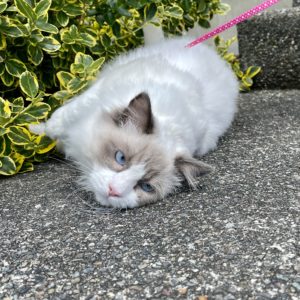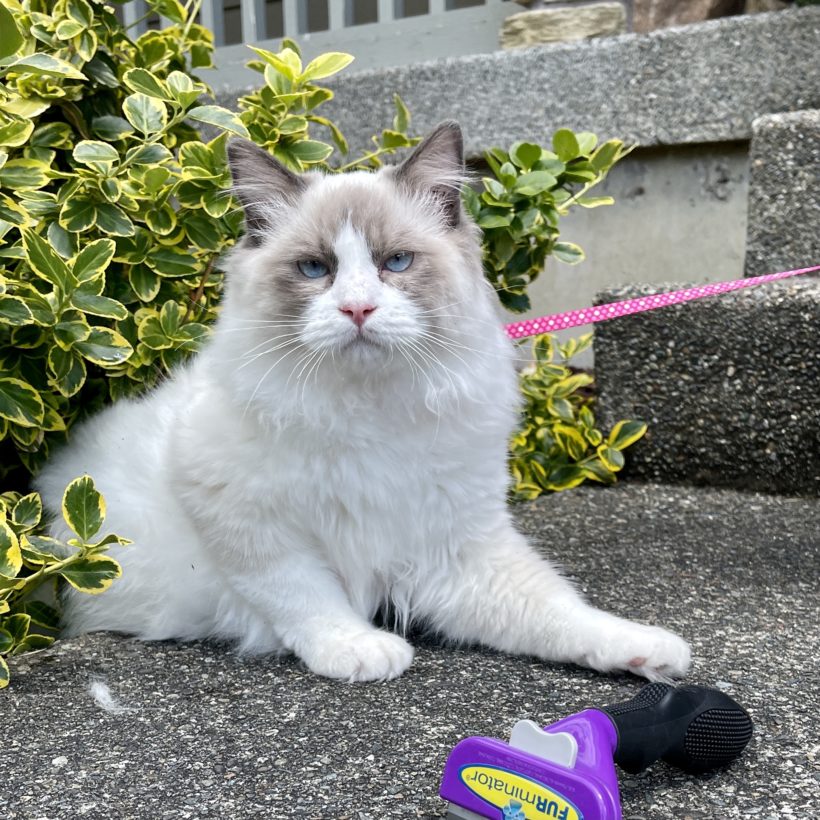What a Ragdoll Cat is NOT
A non-shedding cat.
Rumors abound that ragdolls don’t shed. Anyone who says it is sus. My black sweater will say otherwise. Arguably because the ragdoll lacks an undercoat, the shedding is less. Less hair, less shedding. That’s reasonable. And besides, brushing regularly should help reduce unwanted hair on your favorite sweater!


Hypoallergenic.
The myth started with the idea that because a ragdoll doesn’t have an undercoat. The thinking was less hair = less allergen. Wrong. The culprit behind the human allergy to cats resides most often in a protein (Fel d 1) secreted through skin glands (sebaceous). Since it comes through the skin, naturally this protein is all over the cat’s fur. Another protein, Fel d 4 is salivated by the cat. He spreads it all over his fur as he cleans it, or he deposits it on furniture around the house as he gives himself a good whisker scratch. Sorry to say it. All cats do it.
A long-haired breed.
We love a big fluffy cat, of course, but it’s important to remember that a ragdoll’s fur is semi-long. We allow for shorter coats on unaltered adults. Ann Baker, originator of the Ragdoll, developed the breed from a domestic short hair. So if you see a ragdoll with semi-long hair, know it’s genetic & normal.

Dumb.
Laid back and easy-going is not synonymous with ignorant. Just because a blue-eyed, tender kitty looks longingly at his human for a treat or a cuddle, does not mean he cannot learn a trick.

Ragdolls are quite trainable! In fact, the sounds clanking metal bowls alerts my dolls about meal time. Each morning, they are trained that when I’m carrying the broom for clean-up, there’s also some treats in my pocket. Once I got a little misty during a during a movie. Before I knew it, two seal traditional ragdolls came to lay down beside me, one head-butting my hand. It wasn’t a grand gesture, but it was evidence of their intuition.
A dog.
A ragdoll has a lot in common with a pooch! She recognizes your call. She follows you as you move throughout your home. Like a dog, she is a social creature, dependent on you for affection. But the feline is still a feline. She might take a while to warm up to someone new. She might hiss at something that scares her. She is quiet. She doesn’t bark at the door or yowl if in pain. Don’t be surprised if she resists being picked up repeatedly, or grows weary of handling. It’s just that – in need of a little alone time.

Leave a Reply